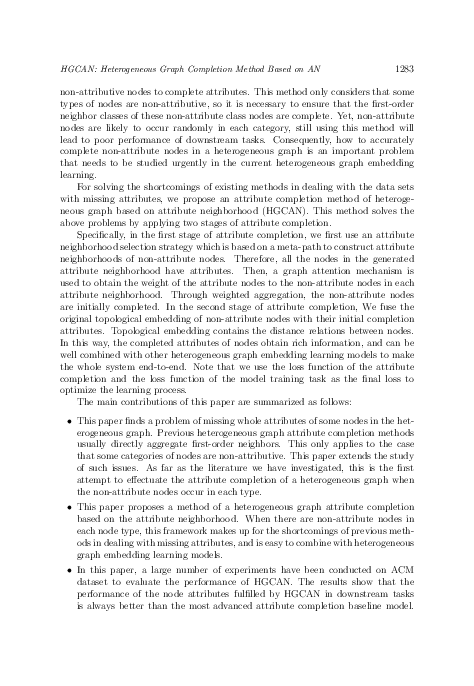HGCAN: Heterogeneous Graph Completion Method Based on Attribute Neighborhood
keywords: Heterogeneous graph, graph embedding, missing attribute, neighborhood aggregation, attribute completion
Recent research shows that the effect of heterogeneous graph embedding learning is vulnerable to non-attribute nodes. However, the existing methods mainly use first-order neighbor nodes to complete attributes, which cannot achieve a satisfactory completion effect on the heterogeneous graphs with random non-attribute nodes. Therefore, this paper put forward an attribute completion method of heterogeneous graphs based on attribute neighborhoods, which is called HGCAN. HGCAN employs two major stages of completion. Specifically, in the first stage, we use meta-paths to construct attribute neighborhoods of non-attribute nodes. The attribute neighborhoods aggregation can capture the semantic relations of attributed nodes to initially complete attributes. Then, the second stage uses structural information to obtain the distance relationships between nodes to further improve the preliminary completed attributes. Finally, HGCAN is combined with an existing heterogeneous graph embedding learning model to verify the validity of the completed attributes and make the system end-to-end. Extensive experiments carried out on the ACM dataset show the proposed mechanism's superior performance over state-of-the-art attribute-completion methods.
reference: Vol. 42, 2023, No. 6, pp. 1281–1304


